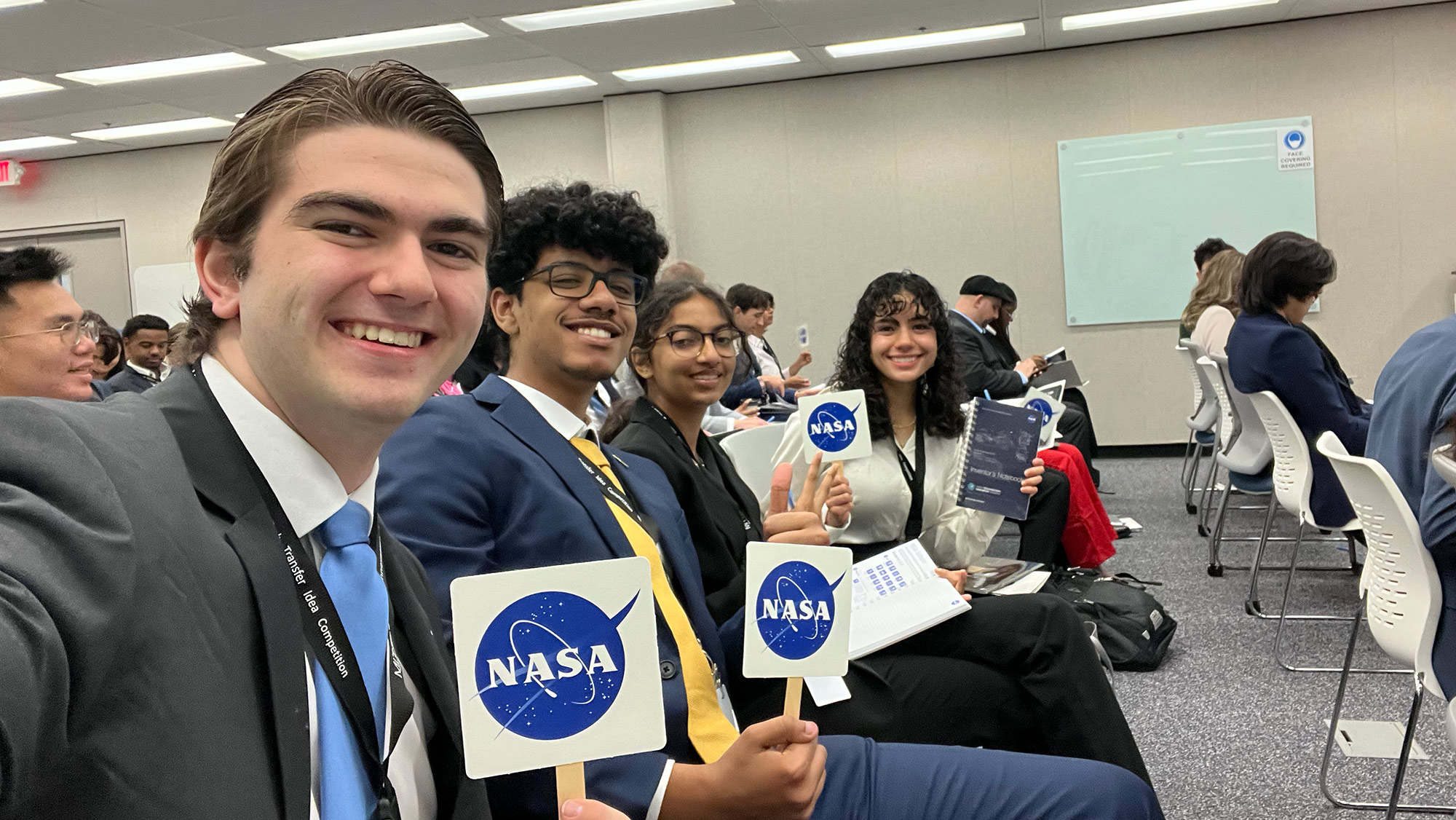
In NASA’s annual MITTIC Competition, students pick one of NASA’s patents and create a product or service with commercial applications.
After a successful first round in the competition, Dr. Sreeram Vaddiraju and a group of chemical engineering students presented their version of one of NASA’s patents at Johnson Space Center for round 2. Team members include Arda Arikan (team lead), Sohaib Attalla, Amy Delgado, and Aarya Patel.
After finding out about the competition through Students for the Exploration and Development of Space, Attalla said the team believed it was an opportunity to expand their knowledge and test their skills.
In phase 1 of the competition, the team selected a patent and submitted a proposal for their product. The team used a NASA patent that would help farmers recycle water and extract important contaminants from it, such as fertilizer and ammonia, Attalla said. This process was designed to be simple and cost-effective.
One of the problems with ammonia is that it’s in fertilizer that people put on their lawn, and when it rains it causes runoffs in the water supply. When fertilizer is used in agriculture, it causes bigger runoffs.
This competition was the first major extracurricular activity I did since college started, and I’d love to have more people sign up for it because it really is a wonderful experience.
“The idea they had is a patent to remove ammonia in water and urine in space,” said Dr. Sreeram Vaddiraju, associate professor of chemical engineering and advisor for the team. “When you take ammonia and water, how do you remove the ammonia and immediately reuse the water, that's the question.”
A closed system would give the team the ability to clean and reuse the water and lessen the runoff, Vaddiraju said. This patent was developed for that application and the team plans on transferring it to a terascale application.
For the second phase of the competition, the teams gave a virtual preliminary pitch review before delivering their final presentation at the Johnson Space Center. While there, they experienced the NASA facility tours, a poster session, and networking opportunities with NASA employees, business partners, and subject matter experts.
The experience was a way for the students to understand what NASA does and how the technology it develops can be used in other ways than space exploration.
“The opportunities this gave the team were not only the chance to tour the actual JSC, but we were also able to meet teams from across the country, NASA employees themselves, and just learn new skills throughout the process,” Attalla said.
Although the team did not make it past the second round, they received high praise for their project, and they have plans for prototyping and working on it with potential investors, Attalla said.
“This competition was the first major extracurricular activity I did since college started, and I’d love to have more people sign up for it because it really is a wonderful experience,” Attalla said. “Get a team together, research an idea, write the proposal up and you’ll have a wonderful chance to have the same experience we had.”